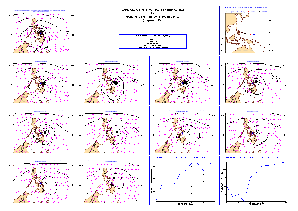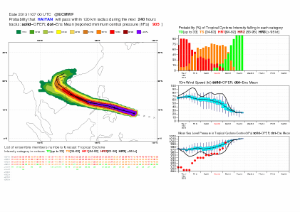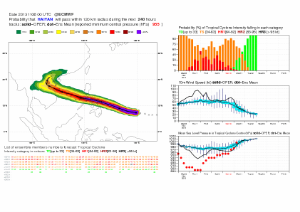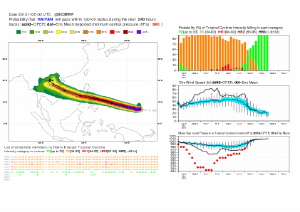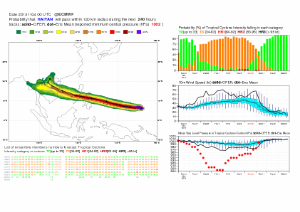Ongoing analysis Material from: Linus
Discussed in the following Daily reports:
http://intra.ecmwf.int/daily/d/dreport/2013/11/05/sc/
http://intra.ecmwf.int/daily/d/dreport/2013/11/06/sc/
http://intra.ecmwf.int/daily/d/dreport/2013/11/07/sc/
1. Impact
2. Description of the event
The cyclone formed on the 3 November. On the 6 November 00 UTC the cyclone first classified as a super-typhoon. Late on the 7 November the cyclone made landfall on southern Philippines. Just before (18 UTC) the wind speed was (estimated?) 195 mph.
3. Predictability
3.1 HRES
The figure above shows verification of the MSLP fields valid 8 Nov 00 UTC. For high-resolution ps-file, click here. Already the HRES forecast from 10 days before had a cyclone in vicinity of the Philippines. In the forecast from the 3 and 4 November the cyclone starts to be more intense. However, the minimum pressure error is very large (60-70 hPa).
3.2 ENS
The figures above shows the strike probability product from 7, 6, 5 and 4 November 00 UTC. Here we see a very consistent ensemble regarding the track, but the ensemble has even higher minimum pressure than the HRES.
3.3 Monthly forecasts
Strike probability of a tropical storm for the period 4 to 10 November. forecasts from 4 Nov, 31 Oct, 28 Oct, 24 Oct and 21 October. As expected for above the forecast from 4 November had a high strike probability. For the earlier forecasts there is a risk for a cyclone (however we have to check how different the probabilities are from the climatology).
4. Experience from general performance/other cases
- Megi, Bopha: super-typhoons with far too high minimum pressure
- Francesco: Why did the model produce such a low pressure for Francesco and not for Haiyan?
5. Good and bad aspects of the forecasts for the event
- Good and consistent forecasts of the track
- Far to high minimum pressure
- Data assimilation makes the cyclone less intense.
